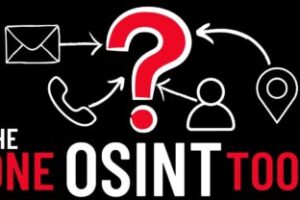The 5 Trust Services Criteria in SOC 2 Compliance: A Breakdown
In this article, you’ll learn the five Trust Services Criteria in SOC 2 compliance and how they ensure customer data is handled securely and responsibly.
You’ll walk away knowing exactly how to implement these criteria to build customer trust, secure high-value contracts, and set your business apart in a crowded market.
…without wasting months wrestling with confusing compliance requirements, risking fines, or losing customer confidence due to preventable data breaches.
Let’s jump in!
What Are the Trust Services Criteria in SOC 2 Compliance on a High-Level?
The Trust Services Criteria are like the DNA of SOC 2 compliance. Created by the AICPA, they outline how businesses should protect information and maintain systems.
Here’s the high-level breakdown:
- Security: The only mandatory criterion — ensuring your systems are safeguarded against unauthorized access.
- Availability: Ensuring systems are reliable and ready when users need them.
- Processing Integrity: Guaranteeing that data processing is complete, valid, and accurate.
- Confidentiality: Protecting sensitive information from unauthorized access or disclosure.
- Privacy: Managing personal information responsibly and in compliance with regulations.
Think of these criteria as the guardrails keeping your data-handling practices on track, no matter how complex your systems might be.
The Five Trust Services Criteria in SOC 2 Compliance in Detail
Here’s the unfiltered truth about what each of these criteria does, why it matters, and how you can ace it.
1. Security: The Gatekeeper
Security ensures that your systems are protected against unauthorized access, both internal and external.
Here’s how you can implement security controls:
- Install firewalls to keep hackers at bay.
- Deploy multi-factor authentication to make unauthorized access nearly impossible.
- Monitor with intrusion detection systems to flag anything suspicious before it becomes a problem.
If you’re running a SaaS platform handling customer data, a breach could crush your business overnight. Security measures ensure you stay one step ahead of the threats.
2. Availability: Always On, Always Reliable
Availability is about ensuring your systems work when your customers need them. Downtime doesn’t just lose you business — it breaks trust.
Did you know?: Costs are up to 16x higher for companies that have frequent outages and brownouts compared with companies who have fewer instances of downtime.
Here’s how you can implement availability controls:
- Implement system monitoring tools to catch performance hiccups early.
- Create disaster recovery plans to bounce back fast after unexpected disruptions.
- Develop incident response procedures so you’re never caught off guard.
Picture a cloud service provider guaranteeing 99.9% uptime in their SLA. Without availability controls, that promise becomes an empty marketing gimmick.
3. Processing Integrity: No Errors Allowed
Your systems need to process data the right way, every time. Processing Integrity ensures that your outputs — whether they’re transactions, reports, or analytics are accurate and trustworthy.
Here’s how you can implement processing integrity controls:
- Use error detection systems to catch and fix mistakes before they escalate.
- Integrate quality assurance processes into every step of your operations.
For example, if you’re an e-commerce company processing hundreds of orders daily, missing or duplicating orders isn’t an option.
Processing Integrity keeps your operations smooth and your customers happy.
4. Confidentiality: Keeping Secrets Safe
When your business deals with sensitive information — trade secrets, customer financials, intellectual property, etc, you have a responsibility to keep it confidential.
Here’s how you can implement confidentiality controls:
- Encrypt data both in transit and at rest.
- Implement role-based access controls so only the right people can view sensitive data.
Think about financial institutions handling client investment portfolios. One data leak, and trust is shattered. Confidentiality ensures that doesn’t happen.
5. Privacy: Respect Your Customers’ Data
Privacy is the promise that you’ll handle personal information responsibly and comply with regulations like GDPR or CCPA.
Here’s how you can implement privacy controls:
- Use consent mechanisms to let users control their data.
- Employ data anonymization techniques to protect identities.
- Write clear privacy policies to communicate your practices transparently.
Whether you’re a healthcare company managing patient records or an e-commerce site handling credit card info, privacy builds the trust that keeps customers coming back.
How to Implement the Trust Services Criteria in SOC 2 Compliance on a High-Level?
Here’s where theory meets action. Implementing these criteria doesn’t have to be overwhelming if you take it step by step.
Conduct a Readiness Assessment
Start by auditing your current processes to identify gaps between your existing controls and the Trust Services Criteria. This is more than a surface-level exercise — it’s your roadmap to compliance.
How to go about it the right way:
- Define Your Scope: Determine which Trust Services Criteria apply to your business. For example, if you handle sensitive customer data, focus on confidentiality and security. If uptime is critical, prioritize availability.
- Assess Critical Systems: Review your IT infrastructure, applications, and processes that interact with sensitive data.
- Involve Stakeholders: Get input from all relevant departments, including IT, HR, legal, and operations. They’ll help pinpoint vulnerabilities you might miss.
- Document Findings: Create a comprehensive report outlining gaps and recommendations for improvement. Use this as a baseline to track progress.
Create Policies and Procedures
Policies are your guiding principles, and procedures are the actionable steps to follow them.
Both need to be clear, practical, and enforceable.
How to go about it the right way:
- Tailor Policies to Your Business: For example, an e-commerce business might focus on data encryption and secure payment processing, while a SaaS company may emphasize secure API integrations.
- Prioritize Incident Response: Outline clear steps for handling disruptions. Test these plans with simulations to ensure your team is prepared for real-world scenarios.
- Regularly Update Policies: Cyber threats evolve constantly. Schedule quarterly reviews to ensure your policies remain relevant.
- Make Policies Accessible: Store all policies in a central repository and ensure employees know where to find them.
Leverage Automation
Technology is your ally in achieving compliance efficiently. Automated tools can help monitor systems, collect audit evidence, and enforce controls in real time.
How to go about it the right way:
- Select the Right Tools: Look for SOC 2-focused software that offers real-time monitoring, incident logging, and evidence collection. Tools like Drata, Vanta, or EasyAudit can simplify compliance.
- Integrate Systems: Ensure tools work seamlessly with your existing IT stack to avoid data silos and manual processes.
- Enable Alerts and Reporting: Set up automated alerts for security breaches, policy violations, or unusual activity. Generate regular compliance reports to keep stakeholders informed.
- Test Automation Regularly: Automation is only effective if it’s working as intended. Perform routine checks to verify its accuracy and reliability.
Train Your Team
Compliance is a team sport, not an IT-exclusive initiative. Everyone from IT to HR plays a role in meeting Trust Services Criteria.
How to go about it the right way:
- Tailor Training Programs: Design training that aligns with specific roles. For example, train IT staff on incident response, while HR focuses on onboarding procedures that adhere to security protocols.
- Make Training Interactive: Use simulations, quizzes, and real-world examples to make learning engaging and memorable.
- Track Progress: Use learning management systems (LMS) to monitor who has completed training and identify areas for reinforcement.
- Repeat Regularly: Conduct compliance training quarterly to keep knowledge fresh and adapt to new risks.
Engage a Qualified Auditor
A qualified CPA firm validates your compliance efforts and provides a SOC 2 report. This step requires careful planning and collaboration to succeed.
How to go about it the right way:
- Choose an Experienced Firm: Look for auditors who specialize in your industry. They’ll understand the nuances of your operations and offer tailored advice.
- Prepare Thoroughly: Before engaging the auditor, ensure all policies, procedures, and evidence are organized and accessible.
- Foster Open Communication: Treat the auditor as a partner, not an adversary. Regular check-ins and open discussions will streamline the audit process.
- Address Findings Promptly: If the auditor identifies issues, act quickly to remediate them and demonstrate your commitment to compliance.
By following these steps and executing them with precision, you’ll not only achieve SOC 2 compliance but also build a resilient, trustworthy organization that earns client confidence and safeguards sensitive data.





